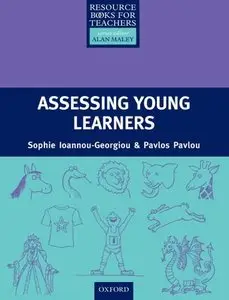Sophie Ioannou-Georgiou, Pavlos Pavlou, "Assessing Young Learners"
2003 | ISBN-10: 0194372812 | PDF | 192 pages | 6 MB
2003 | ISBN-10: 0194372812 | PDF | 192 pages | 6 MB
It is generally accepted that we teach young learners differently from older ones. A whole range of entertaining, motivating, creative, and above all, physically engaging activities has been developed in recent years, to keep pace with the growth in demand for materials to teach this special group of learners. However, when it comes to assessing the progress of young learners, we often find ourselves driven back on testing materials which are more appropriate for use with older learners.
This book will therefore be particularly welcome as it attempts to link assessment with instruction. If teaching is focused on physically engaging, creative, entertaining activities, then these should also be the focus of any assessment which is carried out. Teaching and assessment thus become congruent, not inconsistent.
The book advocates the active involvement of children in their own assessment. A number of suggestions are made for doing this. These include the use of language portfolios, which constitute a running record of the child’s progress in consultation with the child; structured assessment activities/tasks, where ‘normal’ activities are given an assessment focus; projects; self-assessment; peer assessment; learner-developed assessment tasks; and observation/conferencing. There is even a place for more traditional tests in this scheme. It is important to emphasize this wide range of assessment tools, since it gives the teacher flexibility to take account of learner/group differences, and the ability to decide on more or less formal/consultative modes of assessment to suit each case.
It should be stressed that, although the forms of assessment closely mirror the forms of teaching, they have a clearly defined, distinct focus. The aims, criteria, and measurable results mark assessment off from ‘normal’ teaching activities. This book therefore satisfies the justifiable desire on the part of parents, schools, and other authorities for evidence that learning has taken place. But, above all, it can contribute to the children’s sense of pride in their achievement, and thus motivate them to make further progress.



